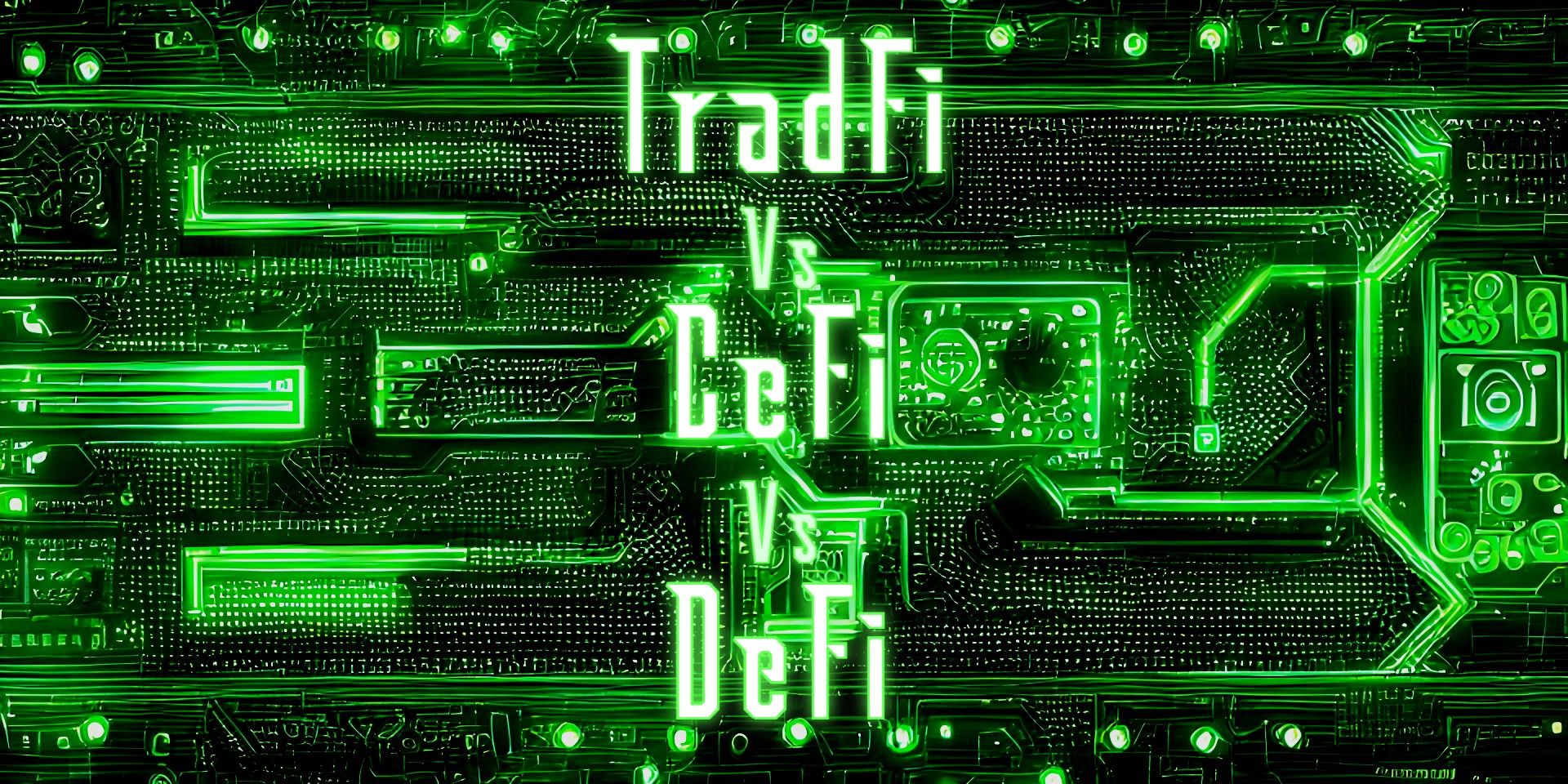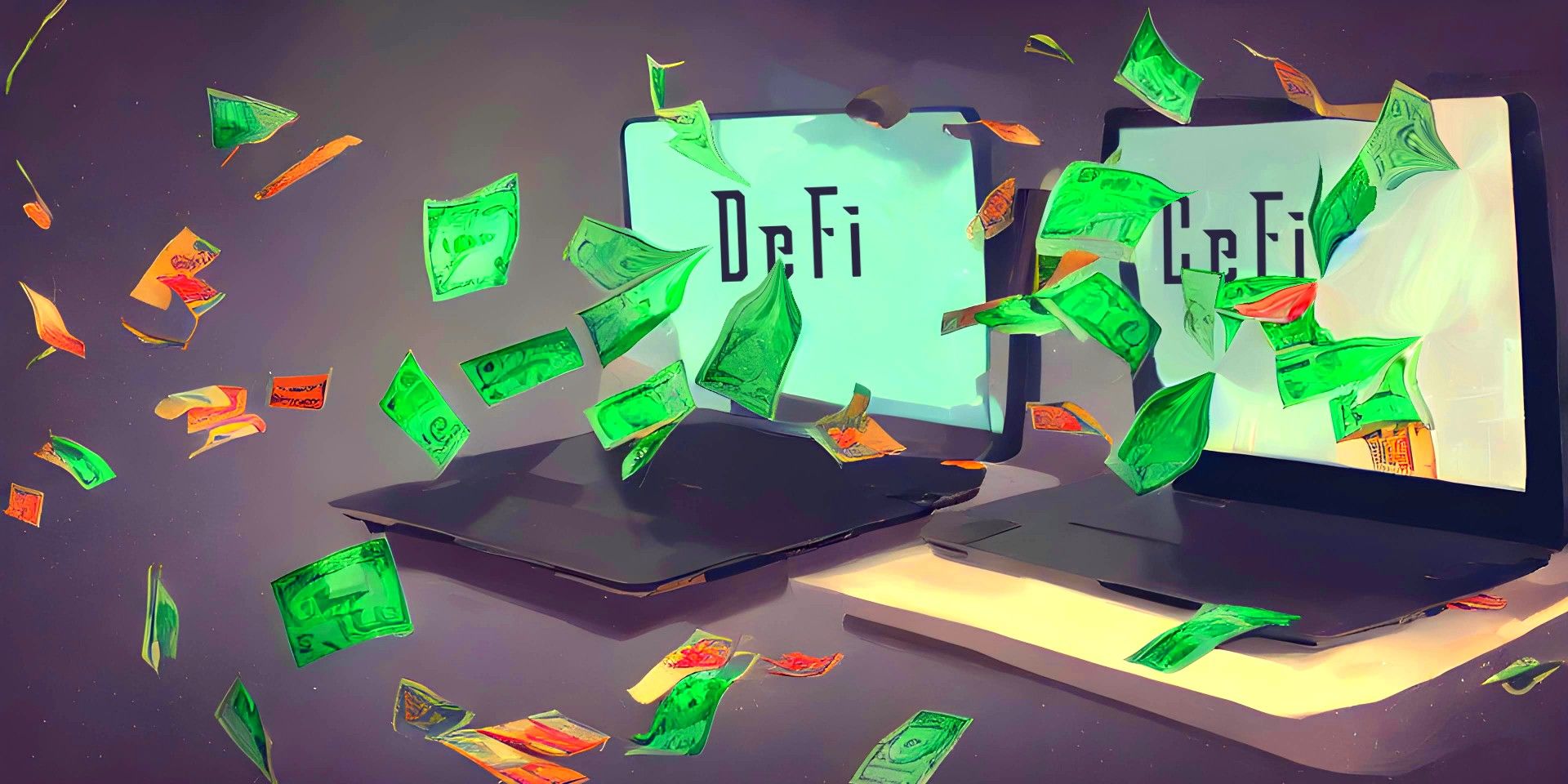One of the most confusing and overwhelming things about blockchain is the sheer amount of acronyms, terms, and inside jokes that are frequently used, among which are 'DeFi,' 'CeFi,' and 'TradFi.' In crypto, any term that has a 'Fi' at the end refers to a type of financial application or a financial industry, both inside and outside of blockchain.
Blockchain has a wide variety of uses, but at its heart it is an economic technology that allows for independent ownership of digital assets. Bitcoin, the first blockchain, was created to counteract the centralization of the traditional financial system by providing an open, decentralized, and 'permissionless' alternative payment system. However, years later Ethereum entered the scene and brought blockchain smart contracts, which are used with website development to create decentralized applications called 'dApps'. This innovation allows users across the world to use their crypto in a variety of ways, resulting in the emergence of many new financial services that all use blockchain technology in some way, some safer than others.
As Ledger explains, DeFi stands for 'Decentralized Finance', and refers almost exclusively to dApps that operate via smart contracts. CeFi stands for 'Centralized Finance,' which refers to companies that use blockchain (and sometimes DeFi) as part of their business model, including cryptocurrency exchanges and centralized lending/borrowing apps. Finally, TradFi stands for 'Traditional Finance,' and refers to the entire non-blockchain financial system that most people use. CeFi apps and services are the 'bridge' between TradFi and DeFi, as DeFi dApps cannot accept bank transfers or use debit cards, and TradFi cannot accept cryptocurrencies as payments (yet).
The Risks Of DeFi And CeFi
DeFi is an unregulated economic Wild West. Scams, poorly engineered projects, and experimental implosions are common, and many DeFi activities present unique risks that require advanced knowledge to protect against. DeFi is also the birthplace of the infamous 'rug pull' scam, and many projects are vulnerable to hacks and exploits that result in losses for users. However, many 'blue-chip' DeFi projects like Aave, a crypto lending and borrowing dApp, and Uniswap, a decentralized cryptocurrency exchange (DEX), have been through enough stress over the years to be considered safe for use, and many additional projects fall into that category as well. DeFi gives all risk, reward, and responsibility to users who want to be their own banks, hedge funds, or venture capitalists, and it provides the tools and data they need to do so.
CeFi is completely different from DeFi, even though it often uses DeFi as part of its strategy to generate income. In early 2022, CeFi lending and borrowing apps were considered superior to DeFi lending and borrowing dApps. However, by mid-2022 the largest of these platforms, Celsius, declared bankruptcy and triggered a cascade of liquidations and CeFi bankruptcies across the industry, including the Voyager Digital CeFi crypto exchange, resulting in billions of dollars in customer losses across the industry that remain unpaid. This series of events taught everyone that (established) DeFi dApps run by computer algorithms are safer than CeFi apps run by humans. While 2022 was a year of many harsh lessons about trusting crypto to third parties, CeFi is only risky if the company providing the service is unregulated and opaque. CeFi plays a vital role in the crypto economy, as crypto exchanges are a form of CeFi services and are currently the only way to move dollars on or off a blockchain.
Source: Ledger


